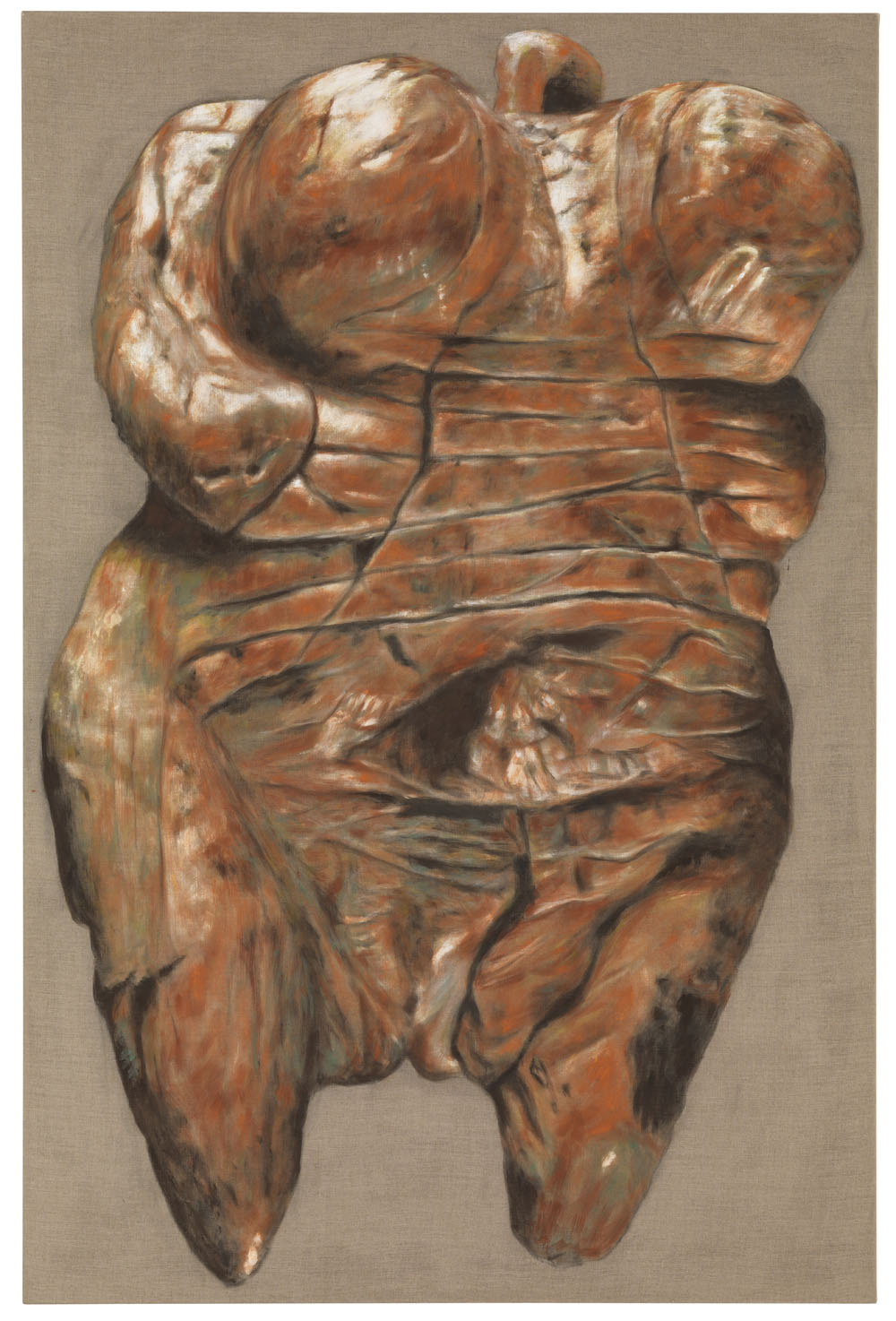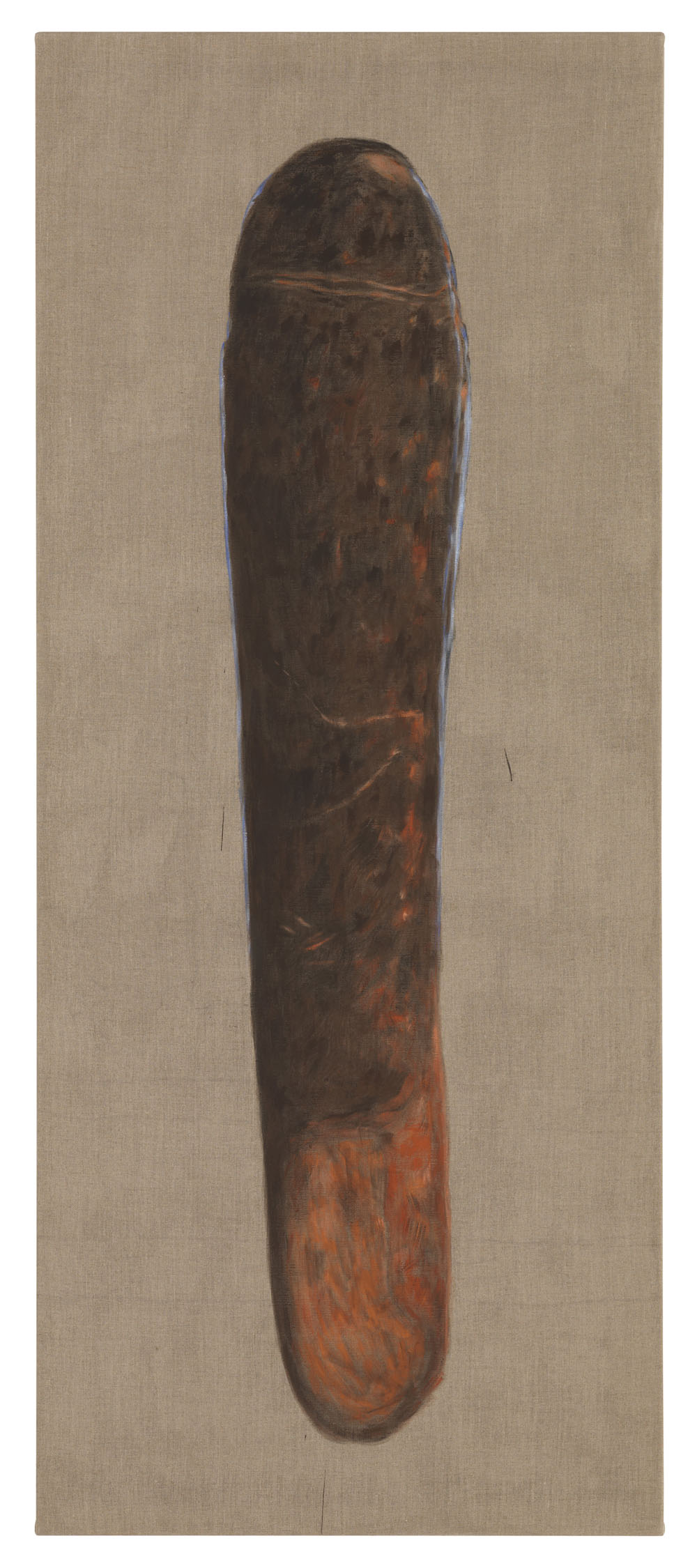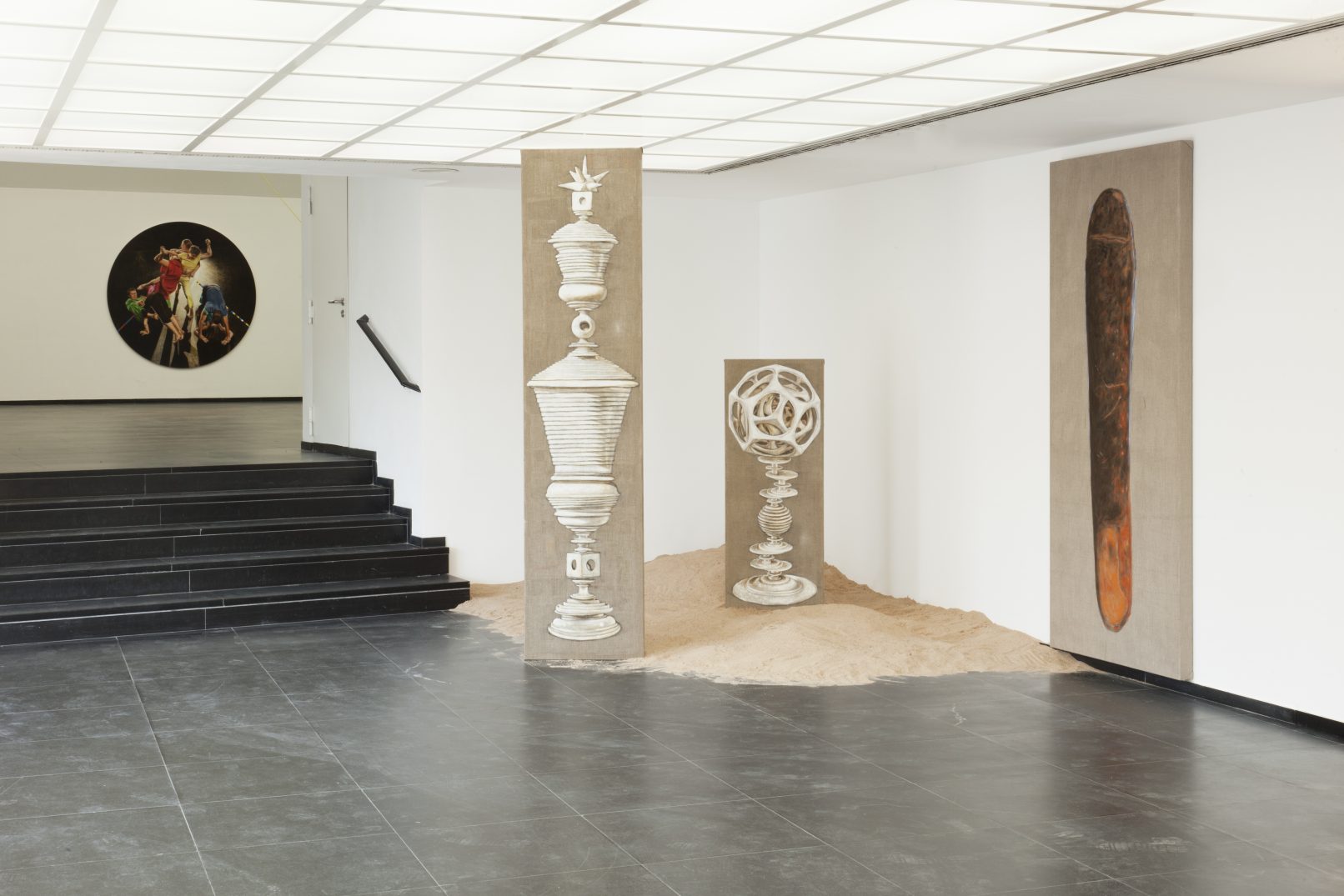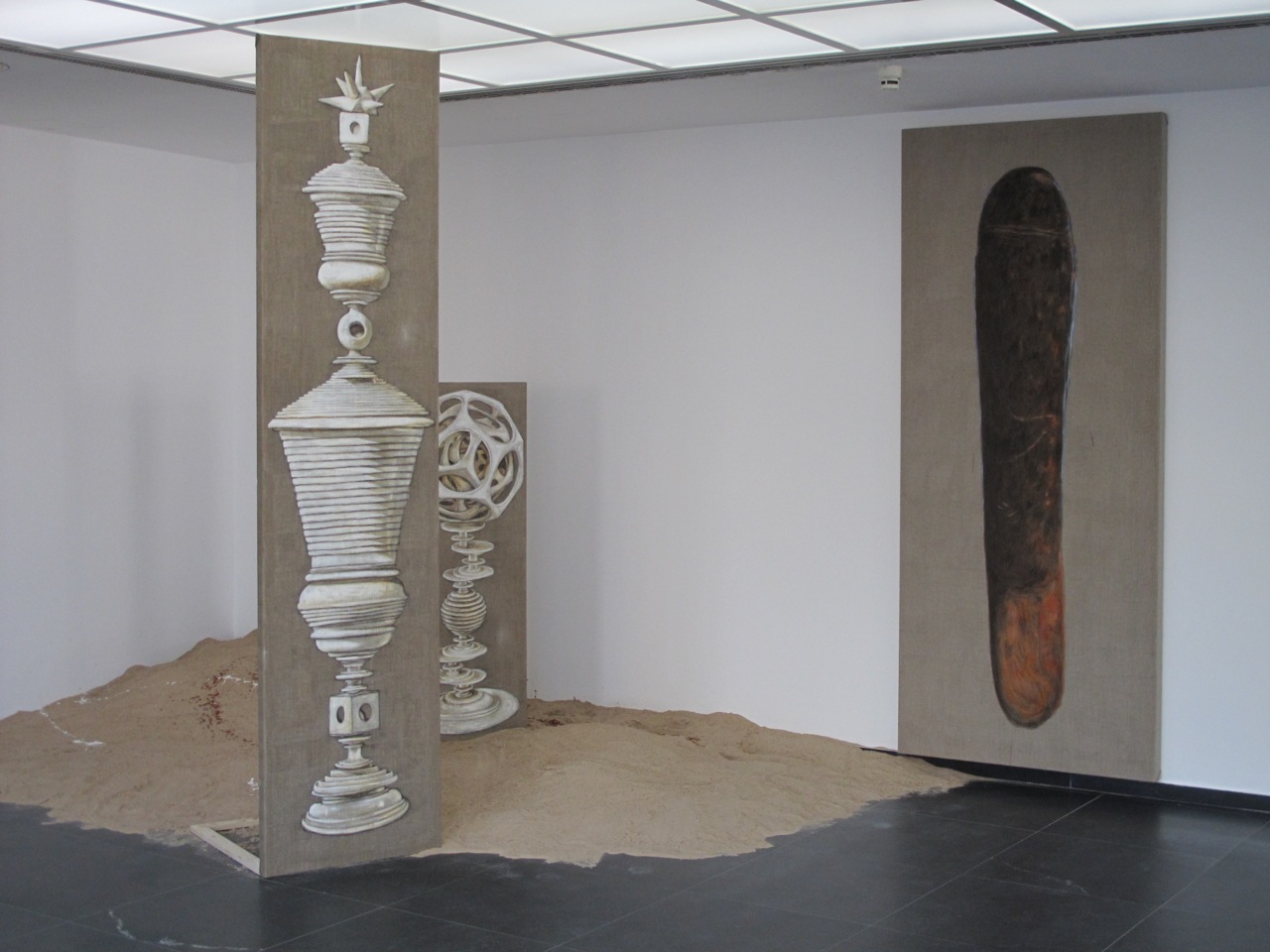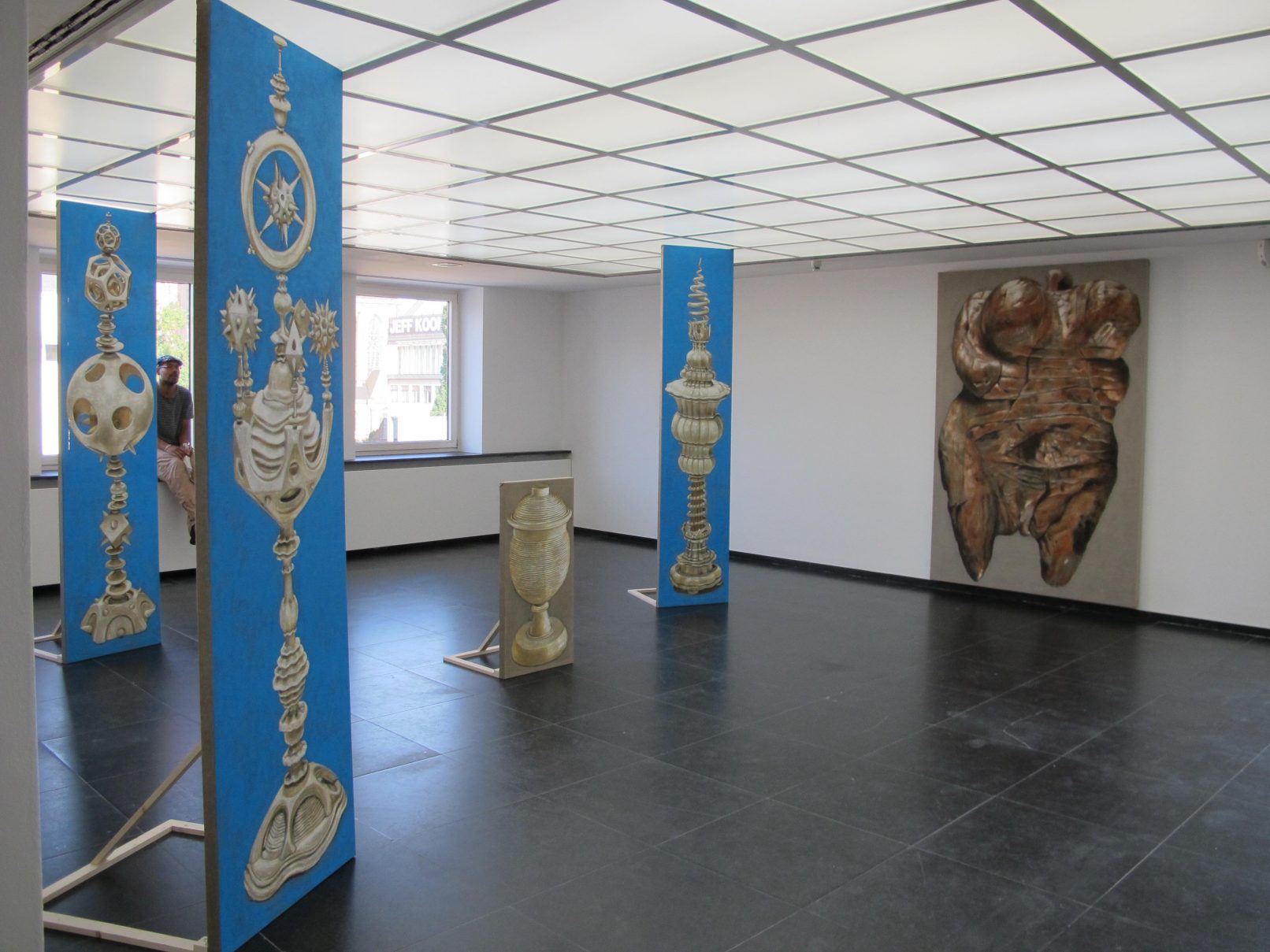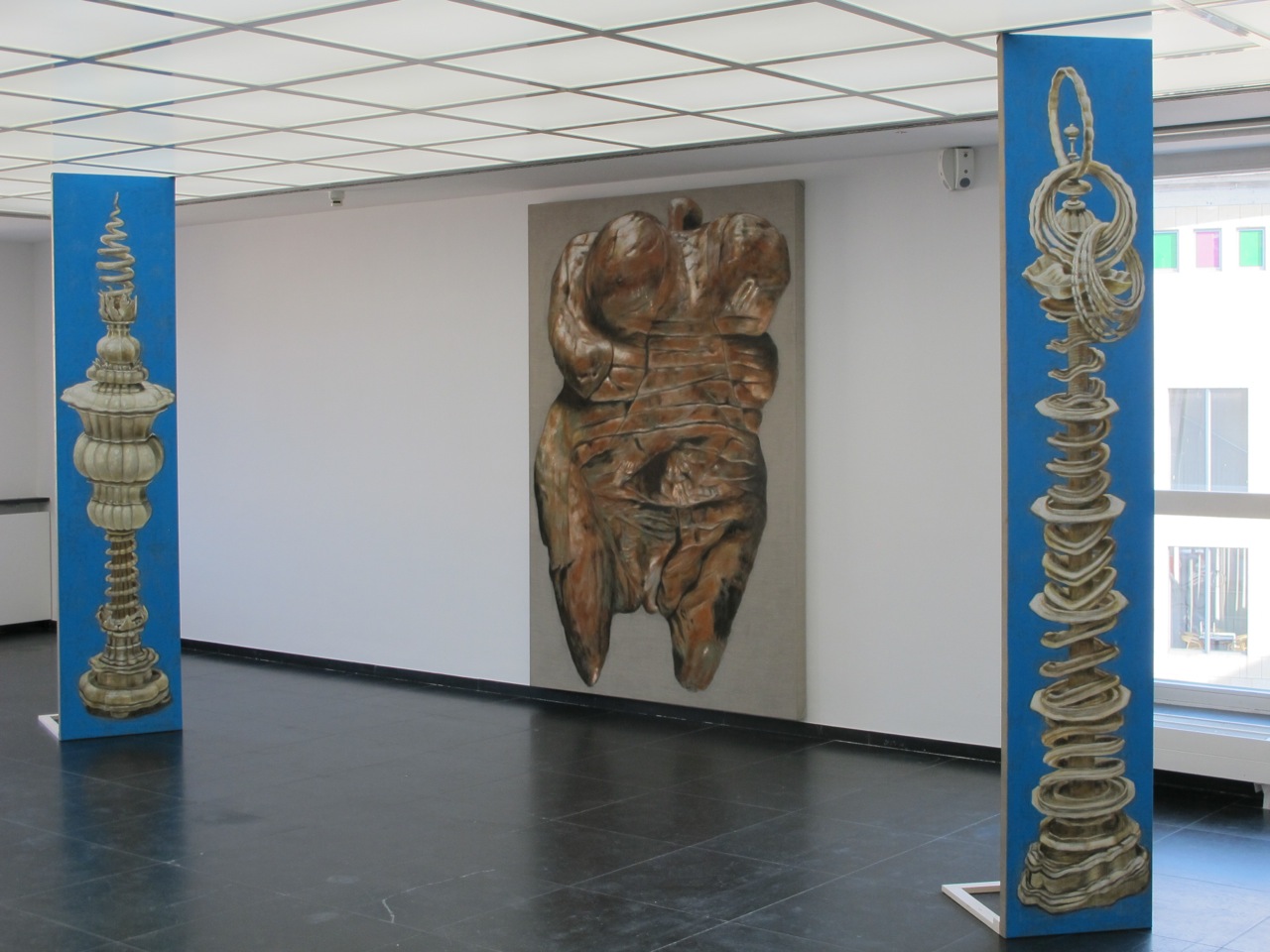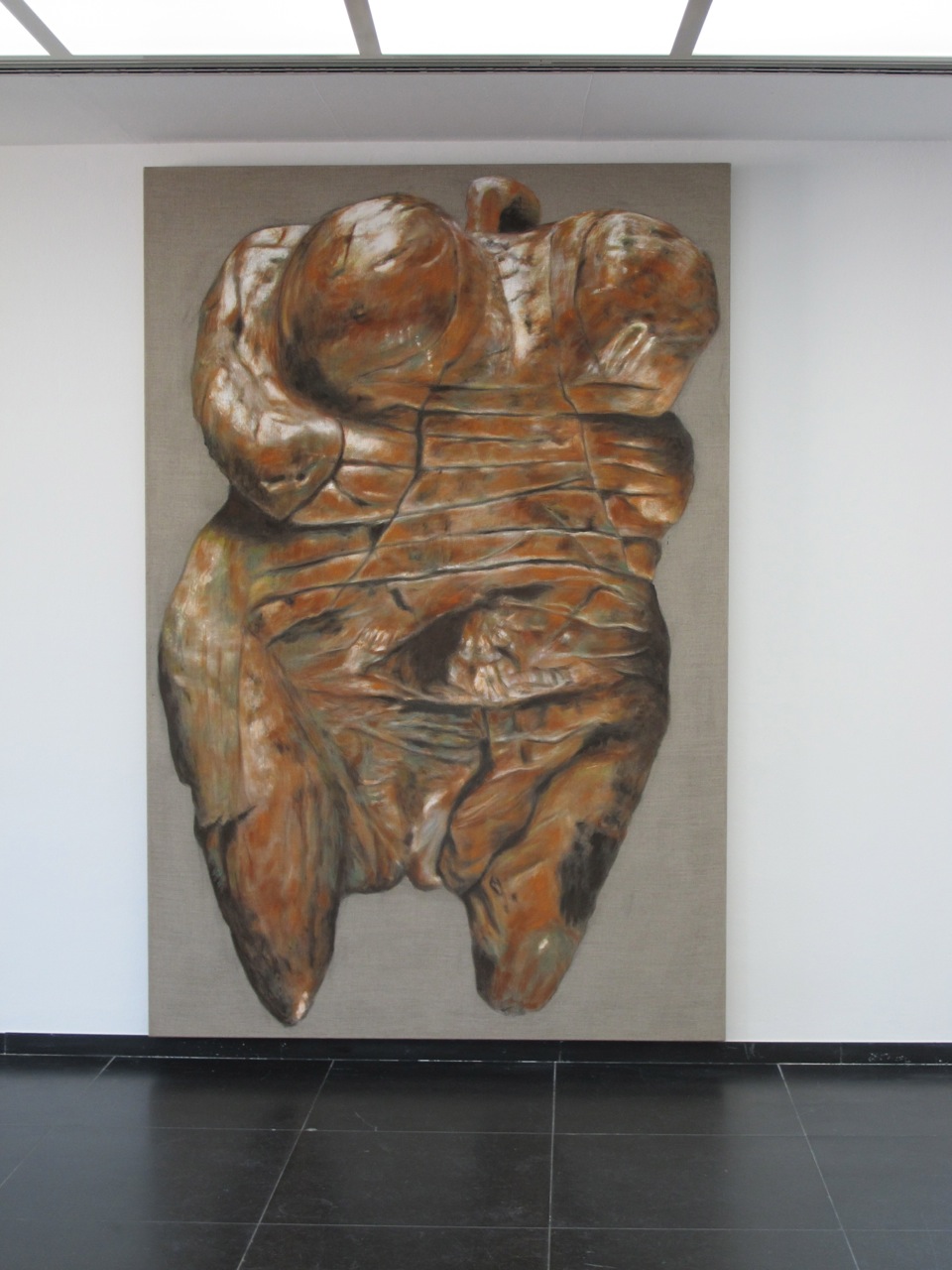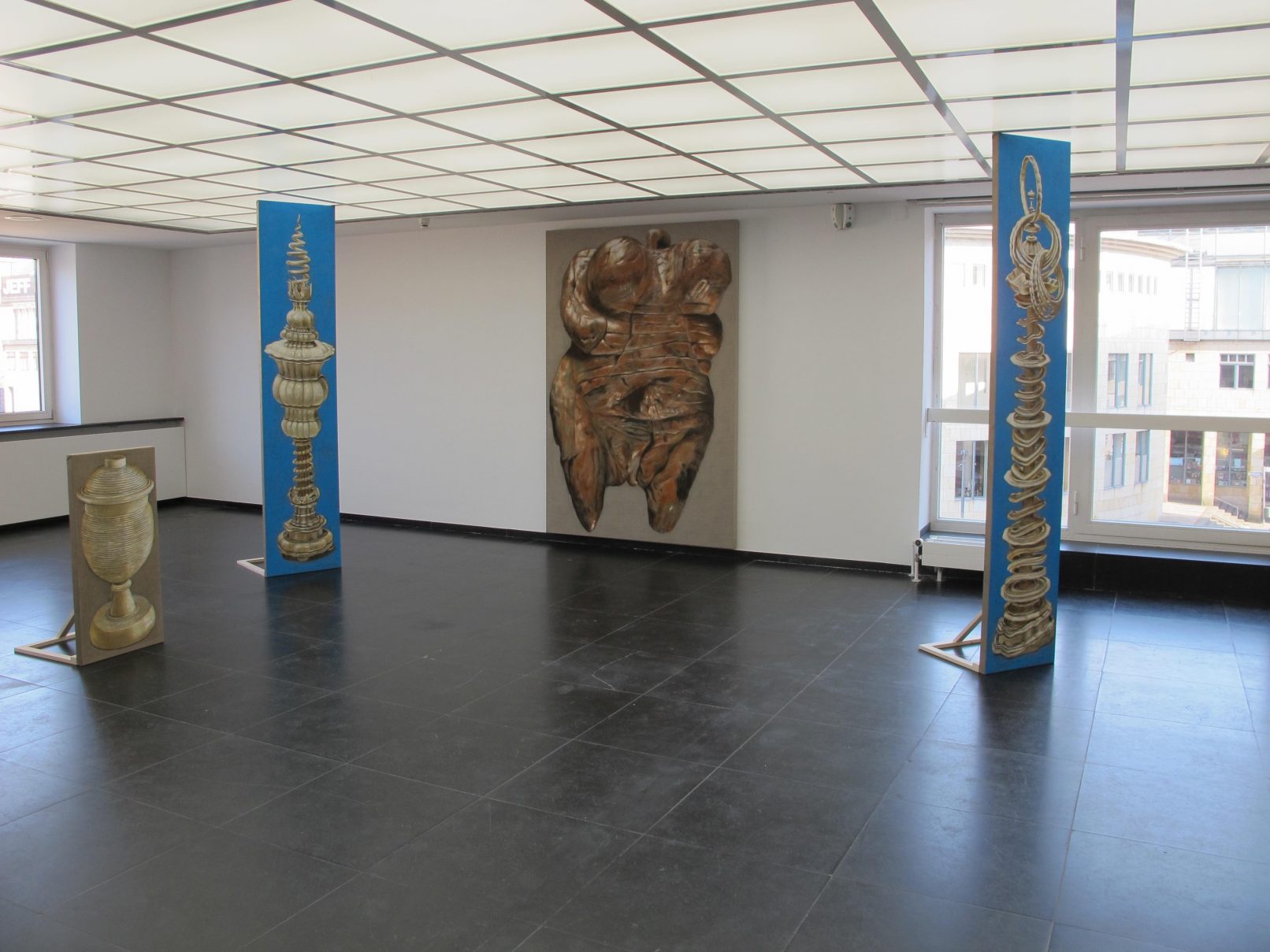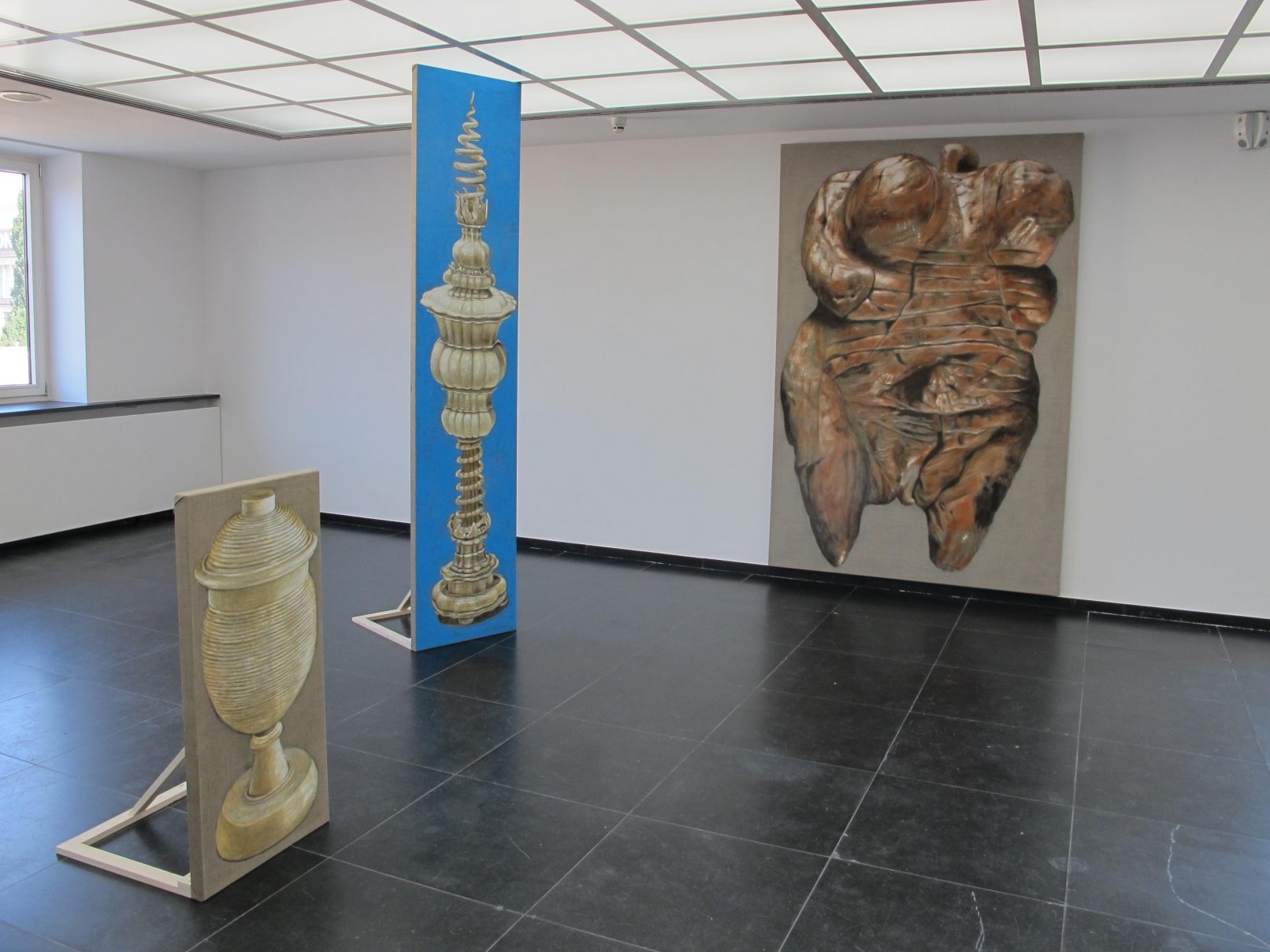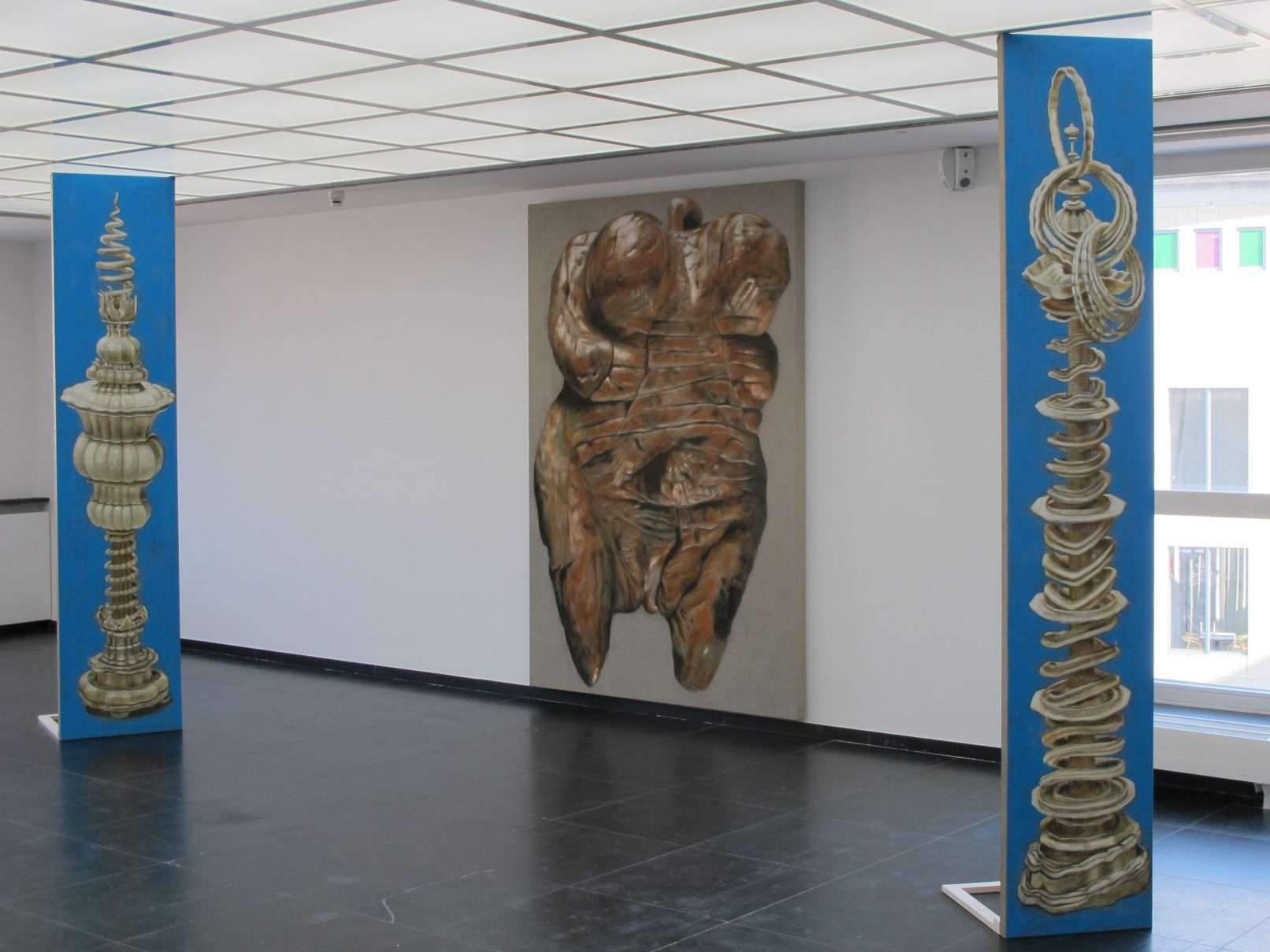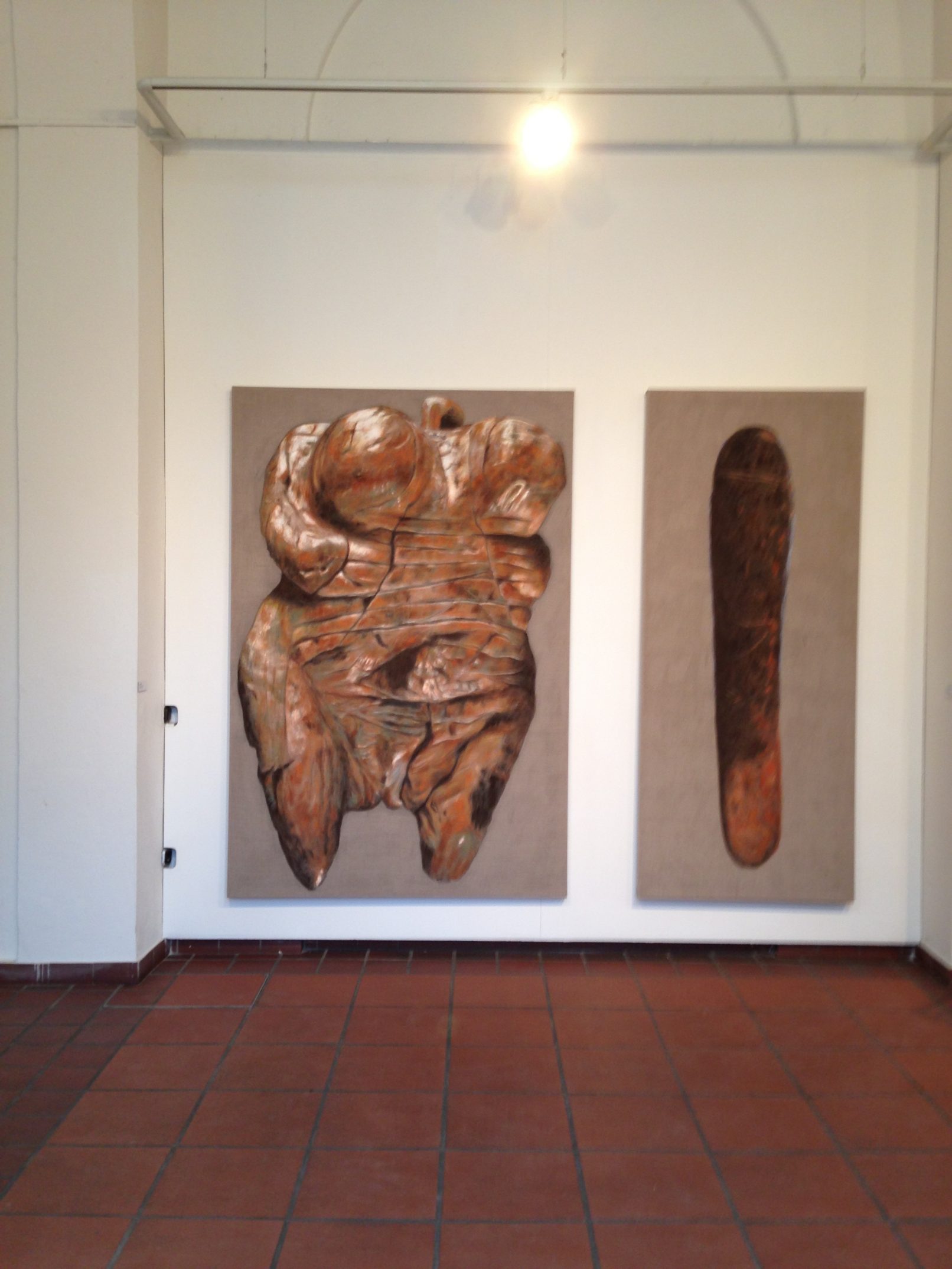Venus and Phallus, 2012
A mammoth ivory statuette was found in 2008 in the cave of Hohler Fels near Ulm in South Germany. She is about 6 cm tall and currently the oldest figurine of all mankind: 35.000 – 40.000 years old. The archeologists who first examined her called her Frau Fröhlich (Mrs. Happy). Her name was later changed to Venus – a cultural import of Greek mythology during the Roman colonization. For lack of a Love Goddess in Christianity, Venus is still the word of choice when today Germans try to describe a symbol of female erotic power.
The Phallus was found in the same cave, but is much younger, around 28.000 years old. The most common interpretation is that it is a phallic symbol, while some argue that it could also have been a tool, something like a mallet. It is made of stone and has some incisions that add to the impressions of male genitalia. I was fascinated to find nearly identical stone objects in the collection of the Weltkulturen Museum Frankfurt, from Papua New Guinea. They were made by an unknown culture around 4.000 years ago. Since there are testimonies of people beating the skin of trees with these objects to make clothing, in this case they are commonly described as “tools” – even if they were also used for magical purposes and look as much like phalli as their much older German cousin. I painted them in my work I go get the good things, you follow me, 2012.
I think any human being would always relate the female figurine and the phallic mallets (from anywhere in the world) to human bodies and their erotic zones. They are for me an example of the possibility of visual images to talk to us over vast periods of time. These very first artworks transport a field of possible relations to our being, both in the world and in our own bodies, even if their meaning remains obscure because nothing is known about the cultures they came from. We can ask ourselves: why does the Venus have no head, but so much body? Why does the Phallus have not even a body attached to it? Is it a very early example of the equaling of Phallus and Logos? Is it in fact just a mallet – or a more erotic sort of tool? However we answer these questions, they can be posed only on the basis of the knowledge that we think as erotic bodies, physically distinguished as male, female or hermaphrodite.
These ancient bodies talk to me, and I translate what they tell me into painting: that they haven’t died, that their bodies of stone and ivory – or in my tempera paintings, earth pigments and egg – are of flesh and blood that rejuvenates through my brush, because it is handled by my own body, so similar to theirs.
They speak about Eros, not only in the sense that they depict erotic bodies, but also about Eros as our drive to create. In this creation one finds forms that can communicate across cultures and times, because they nourish themselves of the “vast sea of beauty,” as described by the female seer Diotima in Plato’s Symposium: “beholding beauty with the eye of the mind, he will be enabled to bring forth, not images of beauty, but realities (for he has hold not of an image but of a reality)…”
See also:
I go get the good things, you follow me, 2011
Exhibitions:
Erogenous Zone / ff / Temporäre Autonome Zone 2, Galerie im Körnerpark, Berlin, DE, 2013
Malerei der Ungewissen Gegenden, Frankfurter Kunstverein, Frankfurt, DE, 2012
Fly or Flow / ff / Temporäre Autonome Zone 1, Galerie Lisa Ruyter, Vienna, AT, 2012
Malerei der ungewissen Gegenden, Frankfurter Kunstverein, D, 2012
